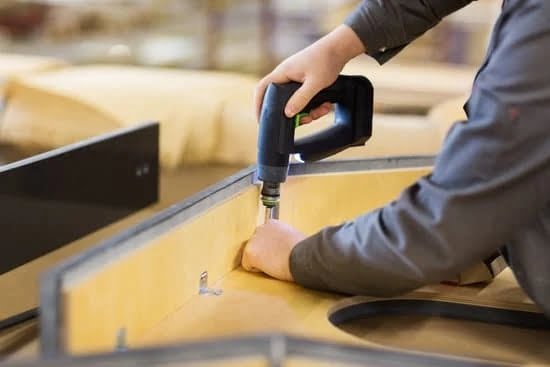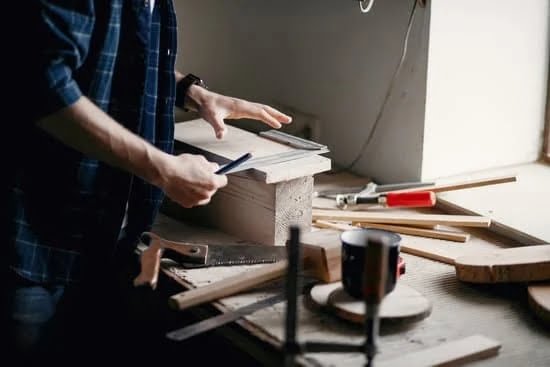Introduction
Woodworking projects are great for anyone who enjoys creating something with their own hands. They can be both rewarding and educational. Woodworking offers a sense of satisfaction as you create something beautiful and functional from a mere piece of wood. It also teaches patience, precision, focus, creativity and problem-solving skills. The more complex the project, the more enriching the experience can be.
Aside from that, there are several other benefits to completing a woodworking project. A successful project will increase your confidence in yourself and your abilities. You’ll gain new insight into how things fit together which gives you greater understanding on how to create objects from scratch. Additionally, you’ll learn about different tools and materials used to construct furniture and other objects like shelves, cabinets, drawers etc., which is an invaluable knowledge for many forms of construction or repair work. In addition, woodworking encourages self-expression as you turn raw materials into finished works of art that reflect your interests and style while allowing others to enjoy them as well. Furthermore, by taking on a woodworking project you have the opportunity to continue honing your craft by making minor adjustments as you go along with higher level projects in order to generate better results each time around.
Planning Out Your Project
Planning out any woodworking project is essential for success. The first step is to select your wood and design; it’s important that the pieces you choose are of a suitable size, grade, and type of wood for what you’re intending to make. Depending on your skills as a craftsman, certain woods may be more suitable than others. For instance, hardwoods such as oak or walnut are more difficult to work with but offer greater durability and stability. After that, it’s important to acquire the right tools for the job — depending on what you’ll be making these could range from saws and clamps to chisels and sanders. Take your time learning about the tools you’ll need so that you know how to use them safely and effectively during your project. Finally, think through the design of your project considering every detail from measurements to methods of construction; writing out a plan beforehand will help make sure everything goes smoothly once building begins. If done correctly, following all these steps will ensure that your first woodworking project is successful!
Getting Started
Before attempting any woodworking project, it is important to understand and practice safety protocols. These may include wearing safety glasses, making sure your workspace is free of debris, and having a plan in place. Additionally, it is crucial to consider the size and shape of the wood you are working with. This can be done by measuring out the pieces you will need prior to beginning your project. Knowing what size and shape pieces you will need for each step will cut down on wasted supplies and time spent making adjustments once your project has begun.
Building the Project
When working on my first woodworking project, I quickly realized that a lot more goes into the process than just putting pieces of wood together. It took a bit of practice to master the techniques and tools needed to build the final product. Here are some tips and techniques I learned along the way that can help maximize the quality of your final product:
1. Work with a consistent grain direction when selecting your lumber for the project- this ensures uniform strength in your finished product and allows you to better visualize how everything will come together.
2. Cut your wood to size with a miter saw or table saw; keeping in mind that cuts made with a hand saw typically need to be cleaned up afterwards with a sander, chisel, or rasp- making sure you’re using proper technique when working with each tool is critical for achieving clean lines and nice joints between pieces.
3. Join smaller pieces together with dowels or biscuits- both have their own unique benefits depending on what look or level of strength you desire for the finished project; making sure to use plenty of glue for these joins is essential regardless!
4. When sanding, always start at a low grit paper (around 80) and progressively work towards finer grits until you reach around 180; using progressively higher grits helps ensure smooth joint lines in the final product without requiring too much muscle from you!
Finishing the Project
Completing the finishing touches on a woodworking project can be one of the most satisfying parts of its creation. There are many different types of finishes that one can use to protect the integrity of a piece and make it look great. Finishes can range from wax to shellac, lacquer, oil and varnish. Before applying any finish, proper sanding is highly recommended so that when you apply the finish it won’t crack or bubble with time. Sanding will also bring out the texture and grain patterns in the wood to give it an even better look. Using finer grits will also help make the surface smoother if desired.
When applying a finish, try using multiple layers and always allow each coat to dry thoroughly before adding another layer. With each coat you can use multiple applicators such as a brush, pad or spray gun depending on what type of finish is being used and how much coverage is desired. Once all coats are applied and dried then do a final light sanding with high grit paper or steel wool to remove any minor imperfections prior to polishing. If desired, one can also stain and/or colorant prior to applying finishes which adds another unique element to any woodworking project as well as create desirable visual effects like different shades within minutes. Finally always remember that completion of every small step builds momentum until finally breathing life into your newfound masterpiece!
Enjoying Your Handiwork
My first woodworking project was incredibly satisfying. I felt an immense sense of pride when I completed it and spent a lot of time admiring my handiwork. I wanted to share my progress with those close to me, but wasn’t quite sure how.
One way to show off the work is by displaying it in your own home. This will not only bring joy and admiration from family and friends, but it also serves as an inspiring reminder of what you’re capable of creating. Depending on the size and shape of your woodworking piece, you may be able to hang it on a wall or place it atop a shelf or mantlepiece. Alternatively, you could present your masterpiece within a shadow box or frame for added protection and display.
Another option for sharing your finished product is by selling the piece online or at your local craft market. This requires more preparation than simply displaying in the home, but allows for others to enjoy the benefits of your labor as well! When pricing items for sale it’s important that you account for all materials used, as well as any additional costs such as shipping or vendors fees incurred at craft markets/fairs.
Last but certainly not least is gifting your item as part of an unforgettable experience. Assemble a gift basket complete with woodworking creations like candle holders, cutting boards, birdhouses; anything you cooked up throughout your journey towards completing that first project! By giving away presents associated with this accomplishment you are sure to leave a lasting impression on all the people around you!
Conclusion
As a woodworker, I have come such a long way from my first woodworking project. It took me several attempts before I was able to develop an understanding of the basic principles behind working with wood and the type of planing, sanding and cutting required in order to achieve the desired results. With each project I seem to be getting better and better at visualizing the outcome and developing plans accordingly. For example, each time my projects are more accurate, taking into account every small detail, from where to place bracing pieces for added support to shaping tiny details that bring presence and character to my work as well as strength. Additionally, I have also become much more efficient with my setup and materials selection; learning how different woods interact with tools has enabled me to conquer any obstacles that may arise when approaching any given project.
In conclusion, it is hard to overstate just how far I have come since my first attempt at a woodworking project – though admittedly it still feels like there’s so much further I have yet to go. Through this journey, I have gained an immense appreciation for the tradition and craftsmanship behind working with wood; no matter what size or shape of object one attempts making out of this beautiful created material requires both skill but also a profound attention towards detail in order for everything you create turn out exactly as planned!

Hi everyone! I’m a woodworker and blogger, and this is my woodworking blog. In my blog, I share tips and tricks for woodworkers of all skill levels, as well as project ideas that you can try yourself.





